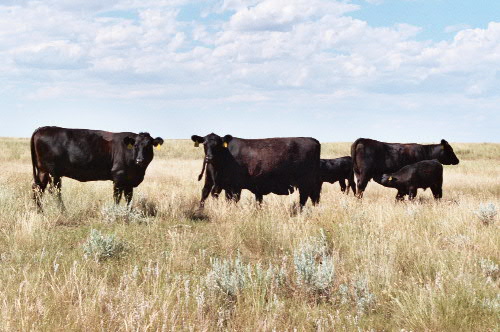
Agricultural News
Can We Rebuild the Beef Cow Herd? Part 1
Mon, 26 Nov 2012 12:05:23 CST

In the first of a two articles published in the Cow-Calf Newsletter, Derrell S. Peel, Oklahoma State University Extension Livestock Marketing Specialist, looks at the numbers to determine if America's cow herd will ever recover from its current tailspin.
That was the question posed to me by a producer in response to my recent article suggesting that two years of drought liquidation, on top of previous liquidation, has pushed the beef cattle inventory so low that we are effectively "out of cattle" in terms of our ability to maintain beef production and rebuild the cow herd. This producer specifically noted two issues that will affect the ability of the beef industry to rebuild: the loss of forage land to non-agricultural (development and recreational) uses; and the conversion of pasture to crop production. While these and other issues pose significant challenges to rebuilding the beef cow herd, I do believe there is ample capacity to rebuild the cow herd according to the demands of the market. That said, the question of how and where it will done is likely to be different in the future than in the past.
In the short run, the drought is, of course, the major factor affecting herd liquidation. Until forage conditions improve, the question of herd rebuilding is a moot one. And while there is no current indication of improving drought conditions, nor any guarantee that conditions will improve, it is likely that some regions, at least, will see improving conditions in the coming months. The more regionally specific drought in 2011 caused a 1.07 million head decrease in beef cows in a single year in Texas, Oklahoma and the surrounding states. Much of this region is still in severe drought, with some areas, such as Arkansas, in considerably worse shape in 2012 than in 2011. There has been some improvement in drought conditions in parts of east Texas but little if any herd rebuilding has taken place yet. Most all of this loss in beef cows can be recovered post-drought, though some parts of the region will take several years to fully recover.
The impact of the 2012 drought has yet to be documented until the next USDA cattle inventory report is available. I expect to see another 400 to500 thousand head decrease in the beef cow herd, spread across several states. I suspect this reduction represents extra heavy culling of the cow herd and fewer heifers entering herds rather than the deep herd culling or herd dispersals that occurred in 2011. Nevertheless, this is additional herd capacity that can return rather quickly with improved forage conditions.
Land use issues affecting the beef industry reflect long term trends and on-going structural changes in U.S. agriculture. Concerns about development and recreational use of forage lands are common and understandable among many cattle producers. Certainly in some areas, the loss of pasture to small acreage development or for other non-agricultural uses is significant and noticeable. However, about 30 percent (571 million acres) of the total U.S. land area of 1.93 billion acres is rangeland, pasture or non-cultivated cropland (mostly hay). No doubt this includes some land used for recreation despite being designated as agricultural. Another 810 million acres (42 percent) is forest land or federal land, a significant portion of which is grazed or partially grazed by livestock. Thus, a majority of some 1.381 billion acres (72 percent) of the total land in the country is used exclusively or partially for livestock, mostly cattle, production. This compares to 305 million acres (16 percent) used for crop production; 33 million acres (1.7 percent in the Conservation Reserve Program); 111 million acres (5.7 percent) developed; and another 5.2 percent in water surface and other rural uses. Land used for development increased nearly 17 million acres from 1997-2007.
Land diversion away from agriculture is not a trivial matter but does not represent a significant barrier to potential rebuilding of the cow herd, at least not on a national basis. The implications of this issue certainly vary in some regions and are part of a broader set of regional changes in agriculture that will affect the beef industry in the future. The next installment of this article will discuss how and where beef cow herd rebuilding will take place.
WebReadyTM Powered by WireReady® NSI
Top Agricultural News
More Headlines...




















